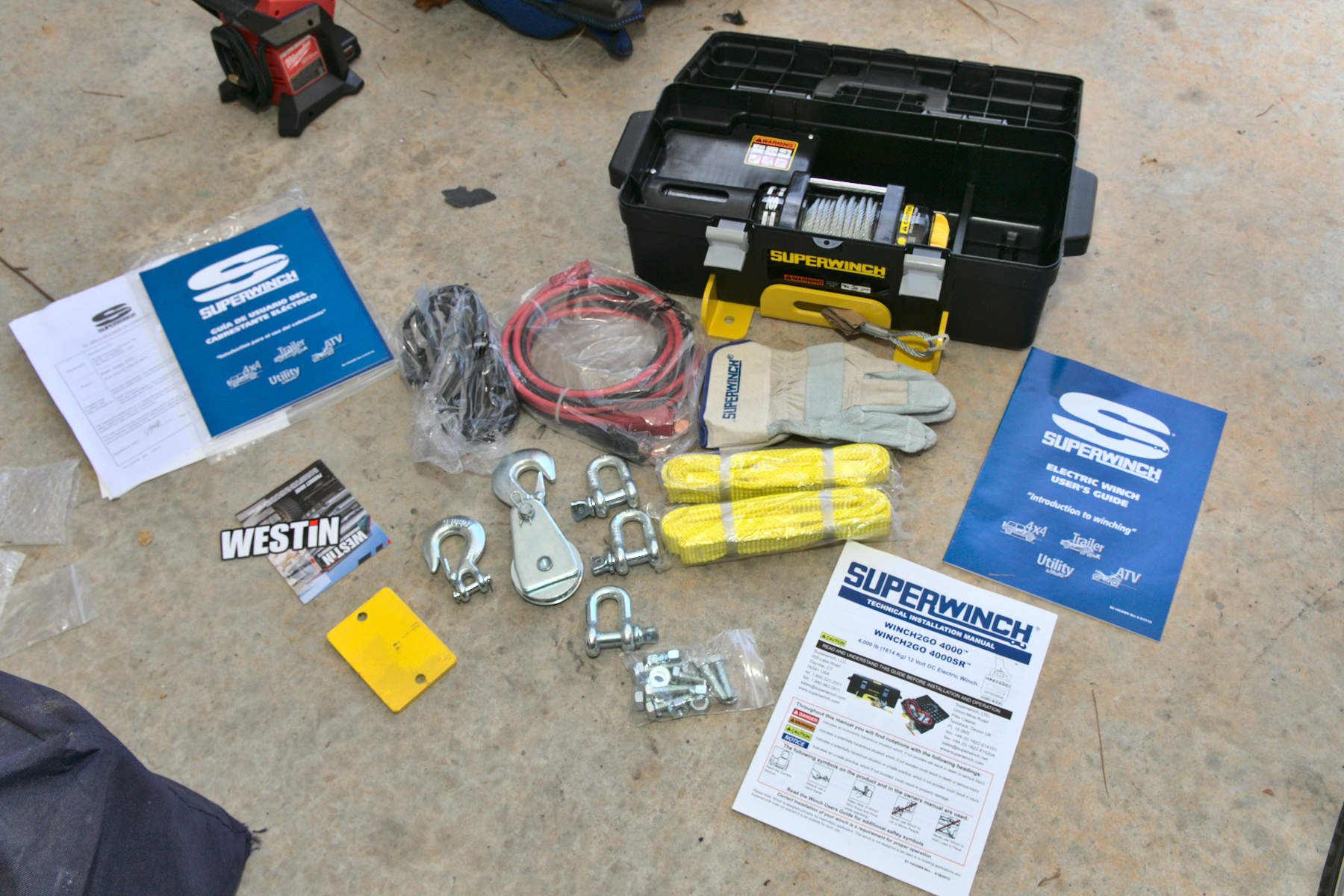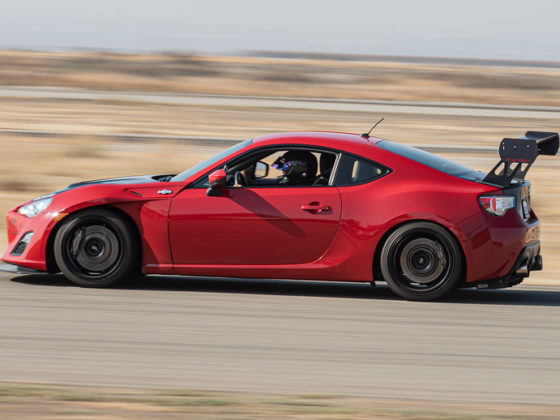Except it was 2020, and so, of course, that was not easy. Since the pandemic has everyone “at home,” people are out in nature. Off-roading. Using winches. And mangling their cables. Superwinch had no stock on the steel replacement cable and didn’t for months. I ended up switching to a nylon cable. It might have less tensile strength, but it’ll be fine for pulling this car onto the trailer.
One thing that bothered me was that, while functional, using the winch like this was annoying. Even if I moved the winch over to the side of the trailer to get the winch drum more in-line with the tow strap, I was still attaching the winch to the trailer with a strap itself. Since it wasn’t hard mounted to the trailer bed, it would go wherever physics dictated. This meant it would bounce around, come up off the trailer bed, and generally be difficult to manage. This is fine for emergency use, but who wants to deal with that every time the car is loaded?
I mean, imagine me squatting on top of the winch assembly, with the controller in one hand, and trying to feed the cable correctly into the winch with the other hand. It was less than fun. A workout, though!
There had to be a better way.

Then, he welded a trailer shank to the bracket of the winch.

A standard receiver pin goes in, just like attaching a trailer, and keeps the winch in place. This setup is now extremely sturdy and is all the way to the left side of the trailer. This places it ideally for my car or any car with an available attachment on the passenger side. It’s a little wonkier to fit into the trailer toolbox now, but it’s not so bad once you figure out exactly how it should go in.
I could also have another receiver installed on the other side of the trailer if necessary. I could even add a third in the center of the trailer if I really wanted to accommodate a lot of things.
The one thing left bothering me was the power cable. The provided alligator clips were OK but kind of annoying to get onto the battery posts. I also wasn’t super thrilled about the dinky plastic covers I had on the battery posts. So, I decided to upgrade and make my own “hardwire” kit.

They’re designed for marine use, where you frequently remove a battery from your jet ski or boat or whatever. To accommodate that frequent in-and-out, you simply pull up on the terminal to remove it from the battery post.
Some 8 gauge hook-up wire was run out to the proper length to reach the winch.

I was able to find these, also on Amazon, with the appropriate 8-gauge terminals to match. The fun thing about these connectors is that they are identical on both sides, so there’s only one red plastic part. As long as you get the positive and negative wires into the right holes, it only connects one way because the plastic housing is keyed.
I took an extra connector, shoved the contacts into it, and electrical taped the heck out of it. This now serves as a “cover” for the end of the cable. The marine terminals can always stay hooked up. I just remove this “cover” and then plug the cable into the winch. Done! I could also make a connector to more easily attach a battery charger, so that I don’t need to remove the marine terminals.
At this point, ironically, I’ve actually fairly un-portable-ized this originally portable winch at the end of all of this. Oops.
However, the tool-boxy part of the winch still holds the things I want it to hold, and a different winch would’ve still needed some fab work to mount. Cost-wise, it’s nearly a wash between the Winch2Go and a low-end utility winch. For example, the Winch2Go retails for $439, whereas a low-end Superwinch utility winch with sufficient pulling capacity is $516.
If I want to upgrade to a nicer winch, I can purchase a new bottom-mount bracket for the Winch2Go, and it’s back to being a portable toolbox winch. There’s an enclosed trailer in my future somewhere, and that can get a fancy permanent-mounted winch. But for now, this Superwinch Winch2Go will do the job just fine.




5 comments
Nice, I just installed a Warn VR8000 on my trailer that i got on Facebook marketplace for $500 CAD. I used a hitch reciever off a parts truck I had, and a $79 Amazon portable winch plate that xomes with a locking hitch pin for a bit of security. Bit of cutting, welding, and paint and it is the best trailer mod yet for loading the non running junk I like.
Now that I have a winch, I will never want to have a trailer without one. I want to figure out a way to use a snatch block to allow for more convenient winching of vehicles that have tow points in different spots. Your setup sounds nice!
Thought this was the primary purpose of Harbor Freight’s winches. A 5k is like $200 bucks.
Though the “winch in a box” would be a great option for someone with like, a Subaru Outback who goes to the snow a lot. You could throw it in when necessary, but don’t have to get all Battlewagon-y just to have an option if someone’s stuck.
A winch that’s critical for getting the race car on the trailer is not something where I want to tempt fate with Harbor Freight “disposable tools.” If this was a non-critical application, it probably would be a totally viable option. There are a lot of tools I would and have bought from Harbor Freight. I don’t think a winch is going on that list 😃
Your snowy Subaru idea is on point, though.
Funny enough, I have a 1995 Outback with 350,000 miles on it!